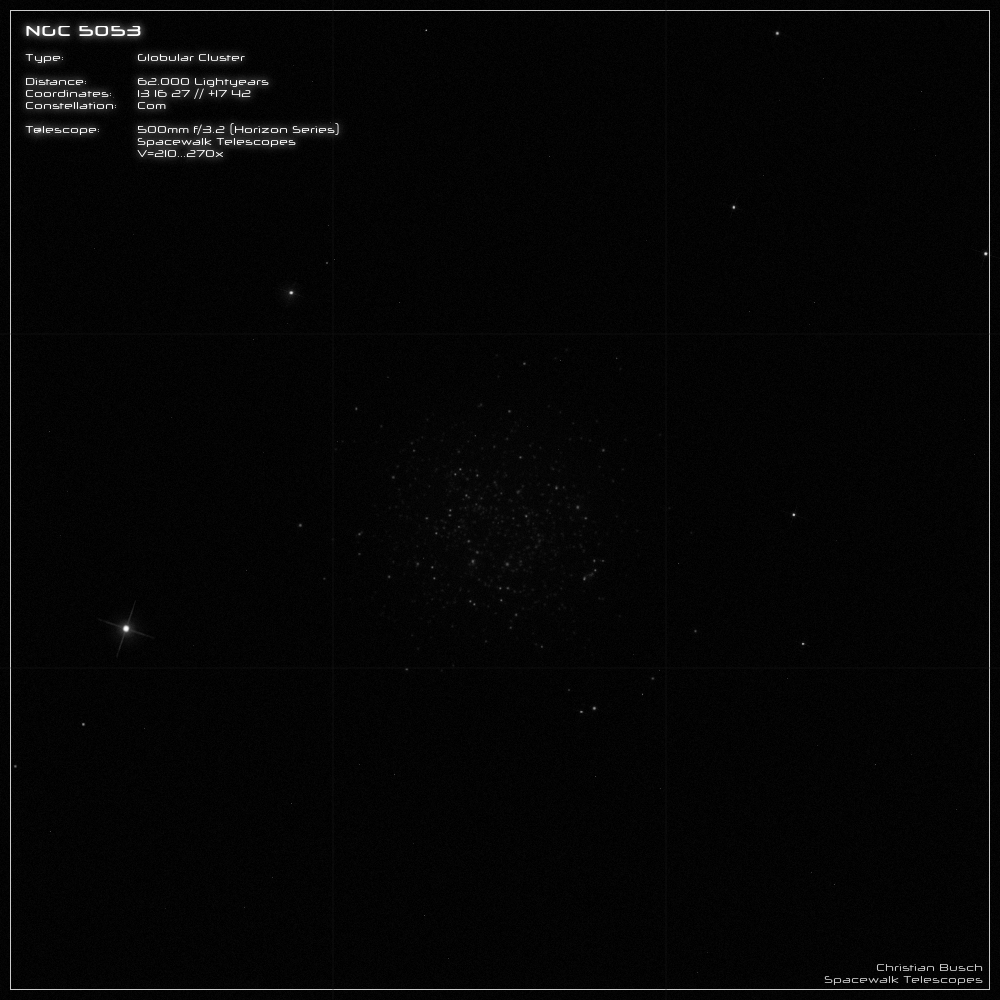NGC 5053, Globular Cluster
The globular star cluster NGC 5053 is located in the constellation "Coma Berenices" with an apparent brightness of 9.8mag and a diameter of almost 10'. It
is around 60,000 light-years away from Earth and was discovered by F.W. Herschel in March 1784.
The cluster belongs to concentration class XI, i. in other words it does not have a dense core. It also contains only around 3,500 stars in a sphere with a diameter
of 180 light-years. The stars are very metal-poor and mainly belong to Population I. As NGC 5053 is only 6,000 light-years away from Messier 53, it is assumed
that the two have interacted in the past. This theory is also supported by a bridge of stars between the two.
Like NGC 4147, NGC 5053 has probably also been snatched from another galaxy, namely the "Sgr dSph".
----------------------------------------------------------------------------------------------------------------------------------------------
In my 20" telescope, NGC 5053 can be seen at a low magnification of 120x as a dull, faint, but surprisingly large patch of light. However, it is best
observed at 210x. Then it appears quite large and homogeneous with a grainy background.
The diffuse background disappears at 270x, and instead around ~100 individual stars can now be seen, all of which are fainter than 14mag. They are
distributed loosely and irregularly over the entire surface - but without any significant concentration towards the center.
A really interesting object, but one that requires a dark sky due to its low surface brightness.

